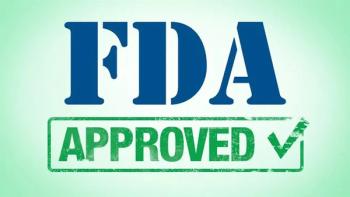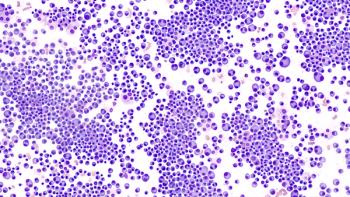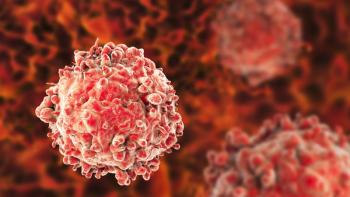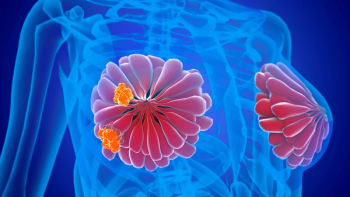
Despite Lawsuits, Debate Over Link Between Talc and Ovarian Cancer Continues
The science linking talcum powder and ovarian cancer is still uncertain.
Anitra Hunt
A possible link between the use of talcum powder and ovarian cancer is in the news again, after a third plaintiff prevailed in a lawsuit alleging that baby powder caused her ovarian cancer, and oncology practitioners may be fielding questions on this topic from worried patients and survivors.
Despite the flurry of legal activity, the science has not changed, with studies showing uncertain results about an association between talc use and an increased risk for ovarian cancer. The most recent case involved Deborah Giannecchini of Modesto, California, diagnosed with ovarian cancer in 2012; the trial in her lawsuit against the baby powder’s manufacturer, Johnson & Johnson, took place in St. Louis where Onder Law Firm, the firm representing her, is located. Jim Onder, an attorney for Giannecchini, said he was pleased that the jury did the right thing. However, Johnson & Johnson plans to appeal the jury’s verdict:
“We are guided by the science, which supports the safety of Johnson’s Baby Powder,” Carol Goodrich, a spokesperson for Johnson & Johnson, said in a statement. “In fact, two cases pending in New Jersey were dismissed in September 2016 by a state court judge who ruled that plaintiffs’ scientific experts could not adequately support their theories that talcum powder causes ovarian cancer, a decision that highlights the lack of credible scientific evidence behind plaintiffs’ allegations.”
Earlier this year, 2 other lawsuits in St. Louis ended in jury verdicts worth a combined $127 million for the plaintiffs. About 2000 women nationwide have filed similar lawsuits.
What Is Talc?
Used for more than 120 years, Johnson & Johnson’s baby powder contains cosmetic talc. Talc is a naturally occurring mineral made up of the elements magnesium, silicon, oxygen, and hydrogen.
In addition to baby powder, talc is also used in cosmetic products such as makeup, deodorant, diaper rash cream, bar soaps, flea and tick powders, and even arts and crafts products. Talc absorbs moisture, helps cut down on friction, may prevent the caking of makeup or even make a product feel better. People who have used talcum powder often do so to keep skin dry and help prevent rashes.
The FDA states that talc may be found in close proximity to asbestos in the earth; therefore, in its natural form, some talc may contain asbestos. Asbestos is a known carcinogen that causes cancers in and around the lungs when inhaled. All talcum products used in homes in the United States have been asbestos-free since the 1970s.
The American Cancer Society (ACS) does not consider talc to be a known carcinogen; however, the World Health Organization (WHO) has named it as a possible carcinogen.
This debate has been going on for decades. Results of studies examining a specific link between talcum powder use and ovarian cancer have been mixed. In 1971, a study of ovarian cancer patients revealed talc particles in ovarian tissue.
According to the ACS, many case-control studies have found a small increase in risk. The organization also states that these types of studies can be biased because they often rely on a person’s memory of talc use many years earlier.1
Two prospective cohort studies—which do not have the same potential for bias — have not demonstrated a link to increased risk.
“Studies have been inconclusive at best,” said Stephanie Blank, MD, director, Gynecologic Oncology Fellowship Program at NYU Langone Medical Center, in an interview. “What happens in court does not necessarily reflect science or reality.”
Information Resources for Patients
The National Ovarian Cancer Coalition (NOCC) says that although talc is found in many products consumed in the United States there are alternatives out there.2
“There are a variety of talc-free products on the market that contain safe ingredients like baking soda, clay powders and cornstarch,” said Anitra Hunt, communications and digital marketing manager of the NOCC. “You can even make your own ‘DIY’ formulas right at home by mixing these items along with essential oils, flours, and more.”
More than 22,000 women in the United States are diagnosed with ovarian cancer each year, and more than 14,000 women die from the disease. Currently, there is no early detection test for ovarian cancer.
The NOCC hopes to educate communities and increase awareness about the symptoms of ovarian cancer, which are often subtle.
“Many studies in women have looked at the possible link between talcum powder and cancer of the ovary,” said David Barley, chief executive officer of the NOCC. “Findings have been mixed, and opinions vary. If you have a fear of ovarian cancer due to usage, consult your physician or choose talc-free products as an alternative. We encourage you to be your own best health advocate and consult your physician.”
References
1. American Cancer Society. Talcum Powder and Cancer. Accessed November 3, 2016.
2. National Ovarian Cancer Coalition. INFOGRAPHIC: The Baby Powder and Cancer Link. Accessed November 3, 2016.
Newsletter
Knowledge is power. Don’t miss the most recent breakthroughs in cancer care.
















































































